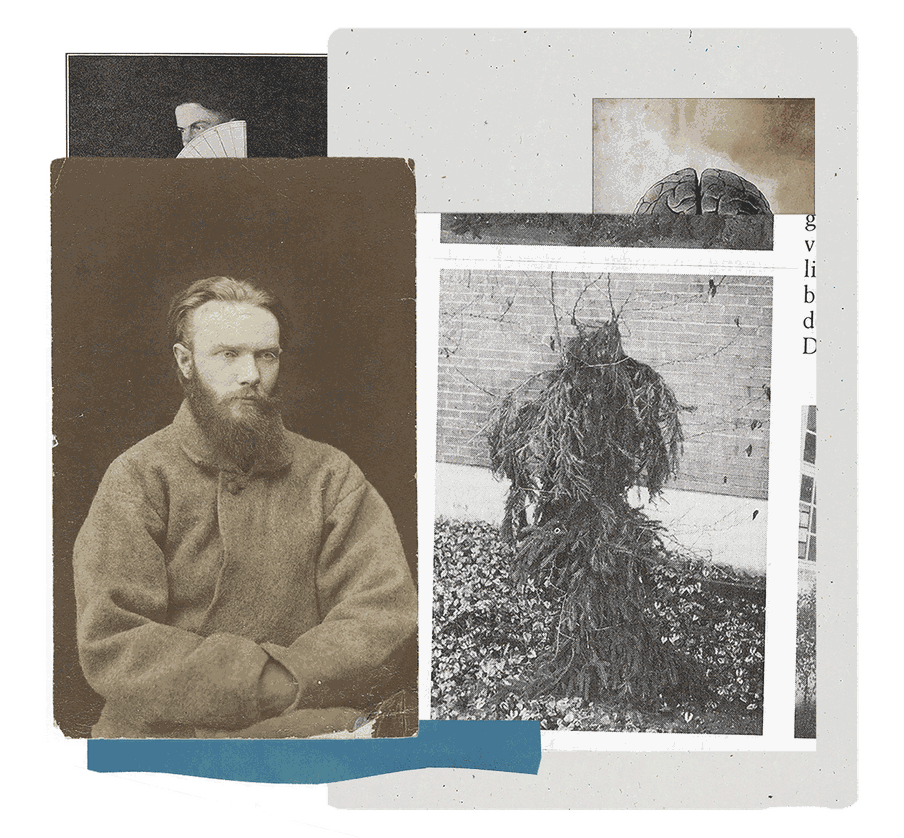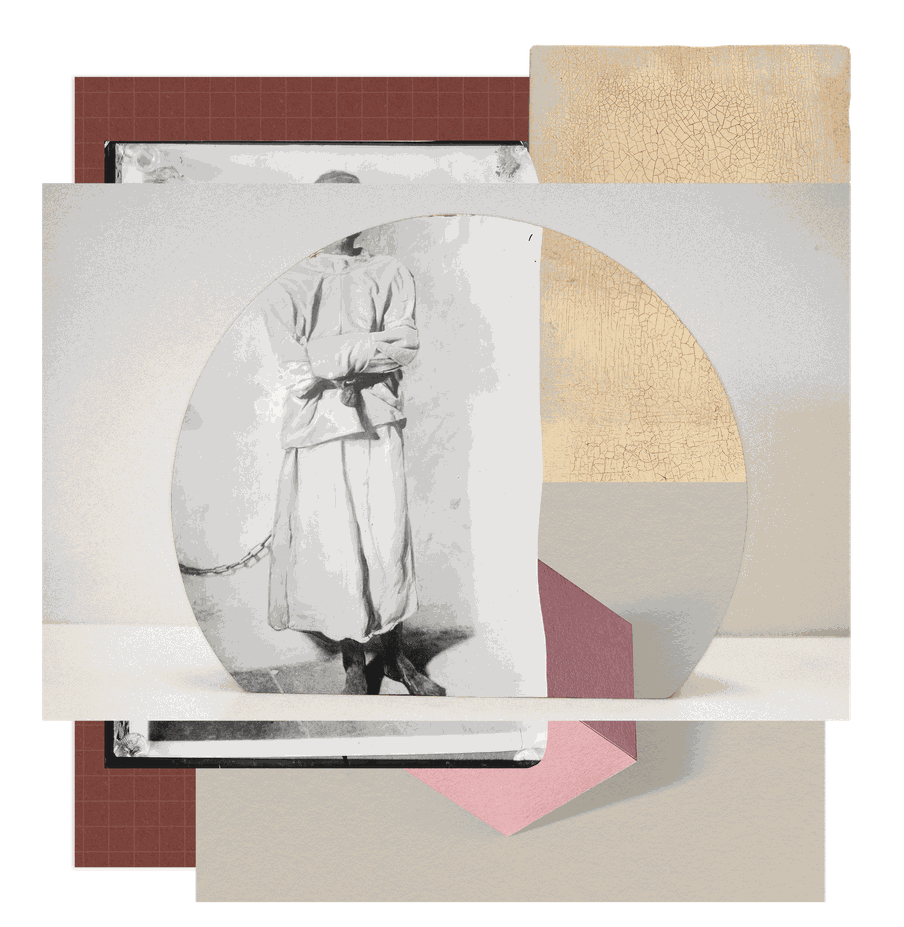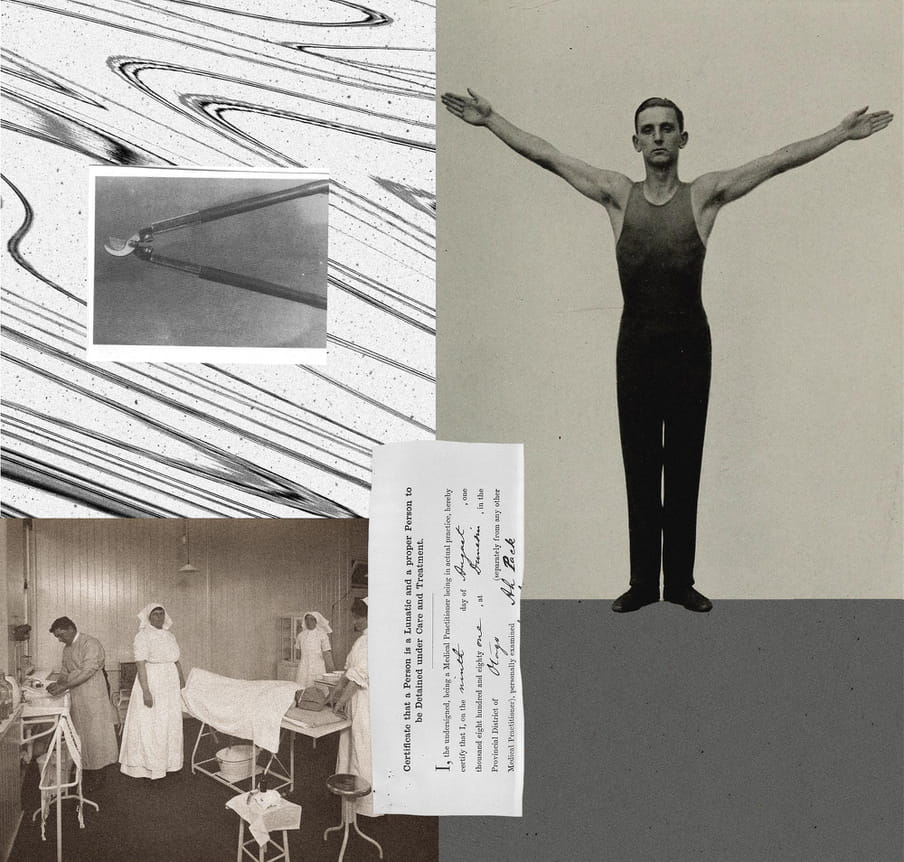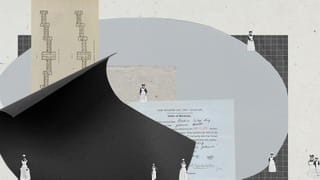There is a famous 19th-century painting of Philippe Pinel (1745-1826) striding through the courtyard in Salpêtrière hospital in Paris at the height of the French Revolution calling for the removal of the chains restraining the psychiatric patients. The scene is an imagined one – or, rather, a condensed and heightened version of reality – but there is some truth to it. At the time, the hospital mostly served as a prison for sex workers and as a holding place for women with mental illnesses, cognitive disabilities and epilepsy. The artwork conveys just how radical Pinel’s reforms were. But it also captures an assumption that remains pervasive: that the history of institutionalisation is barbaric and things are invariably better today. It is an easy assumption to make – but not entirely accurate.
The contemporary conception of psychiatric hospitals is dire, especially when it comes to historical facilities. So-called lunatic asylums are often the setting for horror in movies, video games, and escape rooms, with patients depicted as being just as frightening as the staff.
While it’s no secret that abuse by staff against this vulnerable population was often rampant, the truth is, as always, a knot that’s much trickier to unpick. As comforting as it is to believe that history is full of archaic beliefs that we’ve corrected and moved on from, it’s more accurate to view it as a cycle that we continue to move through. Here is what we negate in our assumption of progress in the treatment of mentally ill people: that over the past several 100 years, there have been many reformers who have fought for more humane treatment. This didn’t start with us. In fact, many of them had ideas that were not totally out of sync with 21st-century beliefs about mental illness. But where they failed – and where current practitioners continue to stumble – was in listening to patients.
Take Pinel, whose desire for change was personally motivated. In a piece he wrote for the Gazette de Santé, the physician described how a friend of his had suffered from what he termed a “nervous melancholy”, which, due to lack of proper treatment, “degenerated into mania”, ultimately leading to the young man’s death by suicide. Watching this deterioration – “reduced to the role of spectator”, as he put it – left Pinel with two core beliefs: that his friend’s death had been preventable, and also that all people suffering from mental illnesses were fully human, with lives and aspirations. This might seem obvious now, but these ideas went against most of the theories that had existed up until that point in western medicine regarding “madness” – a field of study that Pinel described as containing “many prejudices to be rectified and mistakes to be corrected”.
Reforms by this "physician of the infirmaries" included a re-imagining of what hospitals for mental illness might look like, from dim, cramped wards to places full of fresh air and sunlight. He also wrote polemics against the popularly held belief that madness was untreatable, claiming that there could be periods of remission, even cures. He published the first modern classification of mental illnesses, the influence of which, for better or worse, can still be seen in diagnoses today. Pinel referred to his methods as “moral therapy”, and they would change forever the way mental illness was approached in Europe and North America.

A history of the madhouse
The first western example of what we might now call a mental hospital was the madhouse, which began to gain popularity in the early 15th century. Before that, care of the mad – a contemporary term that included people with mental illnesses, cognitive differences, epilepsy or neurological conditions – mostly fell to their families or various religious orders. During the medieval period, there had been a few towns with institutions in which "mad" people were basically imprisoned, but those were few and far between.
The financing of these institutions – then as today – greatly determined the quality of care. More people were working outside of the home, which meant that caregiving was increasingly outsourced to public madhouses, which were also often used to hide away people who were seen to be disrupting civil order by living on the street and begging. (Many of those would have been people with mental illnesses or other disabilities.) Hospitals such as London’s Bethlem (colloquially known as Bedlam) began to let the public in for tours, possibly as early as the 16th century, rationalising that the fees they charged helped pay for their patients’ upkeep. Private madhouses were the alternative for wealthier families who were put off by the poor conditions in public facilities.
“Treatments” such as bloodletting, purging and cold baths were offered across the range of facilities, although these would have done more to benefit the staff than anyone else by making patients weak and docile. As madness was believed to be incurable, there was no incentive to help patients recover; instead, treatment was geared towards making them more manageable.
The advent of the madhouse era marked the first time madness was seen as a medical condition to be treated, rather than a spiritual affliction
The advent of the madhouse era also marked the first time that madness was seen as a medical condition to be treated by doctors, rather than a spiritual affliction – even if it was seen as an illness that was often induced by deviant behaviour. Madness was also, for the first time, recognised as a problem that required a societal solution, rather than just an individual one. Around it sprung up a new industry out of which opportunistic chancers could make a quick buck – what was referred to as the “trade in lunacy”. There was no kind of training or accreditation necessary to operate a private madhouse, and there were plenty of people willing to pay to ward off the stain of having a family member in a public one.
Fortunately, there were those who were appalled by the treatment of patients at these facilities, and as Enlightenment ideas spread across Europe, so too did an understanding that madhouses were degrading and inappropriate. For Bethlem, the moment of reckoning came when Edward Wakefield, a Quaker philanthropist, visited the infamous hospital, accompanied by a member of parliament. There they found, behind a locked door, a ward full of neglected patients, shivering in the cold, bound with restraints. One man was even chained to the wall with a metal collar around his neck. When the story got out, the public was appalled – Bethlem was, after all, paid for with their money – and a special House of Commons committee was created to investigate the abuses. The era of the madhouse was over, and the asylum – along with Pinel’s moral therapy – was about to have its day.

The birth of the asylum
One of the things that helped shape the reforms to come was a new belief that madness could be cured, or at least treated. The biggest proof of this was England’s King George III, who in 1788 suffered from a breakdown that included delusions and hallucinations. Although he would be subject to episodes like this for the rest of his life, he had long periods of remission in between. His struggle with madness caused a sea-change in how it was viewed, since it rendered undeniable the fact that people with mental illness could recover. At this time, it also became clear that the madhouses were doing little more than warehousing the sick.
Although the term asylum now has negative connotations, at the time it was chosen to thoughtfully evoke ideas of safety and retreat. Part of what those who espoused moral therapy believed was that a person could be led back to sanity through occupation, routine and individual care, which they aimed to nurture through cleanliness and stability, instead of leaving patients to languish in crowded wards.
Reformer Samuel Tuke, a Quaker like Edward Wakefield, based his famous York Retreat on these ideals. Unlike hierarchical hospitals of the day where doctors were all powerful and staff were the enforcers of that power (a system still recognisable even now), York Retreat created a community where everyone lived together and participated in daily life. The goal was to immerse patients in as close a facsimile of normality as could be managed, hoping that this would eventually lead them to be able to live on their own.
This new model was the source of much inspiration in England and the US, and asylums following in York Retreat’s footsteps began to spring up. They were often in rural settings, since being out in the countryside meant they could be more self-sufficient, with large gardens and farms that provided food and useful occupation for the patients. The remoteness of these treatment centres also kept patients away from city life, providing a chance to withdraw from negative influences and reset in pastoral surroundings.
In the United States, a psychiatrist named Thomas Story Kirkbride – yet another Quaker – designed a model of asylum that became famous for its huge bat-shaped buildings, with staggered wings designed to optimise the amount of sunlight and fresh air the patients received. Much care went into the construction of these buildings, which used the finest materials available and boasted luxurious amenities. Kirkbride’s vision of treatment was based on Tuke’s model, and involved staff living at the hospital and taking meals with patients. As at York Retreat, the intention was to instil a sense of steady, wholesome everyday life.
But it was one thing to build these radical new hospitals, with their airy hallways and comfortably furnished sitting rooms, and quite another to maintain them. Part of the problem for these pioneering asylums was that the model demanded much of the staff – who were expected to live on-site and be available around the clock, like family members – making it expensive to run. Publicly funded asylums, seeking to maximise value, soon became overcrowded and understaffed. Hospitals that were supposed to have beds for a few hundred patients instead found themselves caring for thousands of patients.
Just as troubling was the fact that some of these asylums couldn’t make good on all their promises. The Kirkbride hospitals in particular claimed to have cure rates of 80-100%, which just wasn’t true. As such, these facilities that were conceived to provide short-term rest instead became long-term care homes.

The pendulum of mental healthcare swings yet again
As countryside asylums more and more came to resemble the madhouses of old, with poor and indigent people overrepresented in the patient population, another type of mental health facility rose to popularity at the end of the 19th century: the spa or sanatorium. Here, wealthier people could take a “rest cure” for conditions like “neurasthenia”, a vaguely defined disorder that was akin to nervous collapse. Unlike the state-funded asylums or facilities operated on a charitable basis, only people with money could retreat to these sanatoriums where through a combination of rest, diet, hydrotherapy and gentle exercise, they prepared themselves to return to the busy world.
Fast forward to the early 20th century, and the pendulum on mental healthcare would swing yet again, in part due to new understandings of how diseases worked. Thanks to medical advances – some of which were due to highly unethical experiments – it became possible to cure or at least treat some physical illnesses that produced psychiatric symptoms, such as syphilis, which caused delirium and dementia.
It was also around this time that the term “mental illness” came into usage, as it was thought to be less stigmatising than previous terms and a way of flagging that these conditions really were illnesses and not some kind of moral disorder.
The obsession with finding a biomedical cure for mental illness continued throughout the 20th century
These factors all influenced the biomedical model of mental illness, which was just then coming into vogue. Instead of seeing mental illness as being caused or exacerbated by factors such as trauma, poverty and broken social connections, mid-20th century psychiatrists began to subscribe to the belief that it was entirely due to some kind of infection or other physical problem in the brain – and thus, curable. After all, if penicillin could be discovered, then maybe it was possible to create a similar magic bullet that treated mental illness as easily as antibiotics treated bacterial infections.
While old asylums continued to operate, there was a growing movement to treat mental illness in a much more clinical setting, preferably in an urban environment for ease of access and to help keep patients integrated in their communities.
The obsession with finding a biomedical cure for mental illness continued throughout the 20th century, with treatments that directly impacted the brain such as electroconvulsive therapy, lobotomy, induced comas and, towards the middle of the century, new antipsychotic drugs like thorazine, which sedated patients without making them unconscious. Although each of these were hailed as a revolutionising force in the field of psychiatry, as with asylums none of them delivered the miracle cures that they promised. In fact, it is now widely acknowledged that the dangerous side effects of many of these new treatments were either downplayed or ignored by physicians.
By the late 20th century, many countries in the west went through the process of deinstitutionalisation. Through the efforts of advocates – many of whom had experienced asylums first-hand – it had become clear that the mental health system was still rife with abuse. The idea began to foment that it would be good to move psychiatric patients out of hospitals and back into the community. But, as has so often been the case when it comes to mental health, adequate supports weren’t put in place.
Many patients didn’t have families to return to, and wound up further marginalised and sleeping in shelters or on the streets. Instead of fixing the problem of people with mental illnesses being warehoused in hospitals, these former patients were readmitted over and over to short-term care facilities. Without access to housing or addiction treatment, many former patients moved from crisis to crisis, initiating what’s now known as “the revolving hospital door” problem. This is the moment in psychiatric healthcare we are still living in.

Good intentions in mental healthcare aren’t enough
Looking back through the history of mental health reform, it is clear with every wave of change that the intentions have almost always been good. But what is equally crystal clear is that good intentions aren’t enough.
When those who are on the receiving end of that care are never consulted on what they want or need, care becomes paternalistic and prescriptive. It becomes about what is easiest for the caregivers, which usually results in patients being pushed into docility, whether that’s through bleeding and purging or the heavy use of sedative drugs.
When those on the receiving end of care are never consulted on what they want or need, care becomes paternalistic and prescriptive
The absence of patient voices focuses attention instead on the dramatic moments – Pinel removing the restraints from patients, Kirkbride unveiling his gleaming new hospitals – when what needs our attention is the sustainment of these big ideas.
As the evolution in responses to mental health continues, what we see is that mentally ill people have been treated in ways that prioritise other people’s comfort for too long. And what we must learn so that the history of institutionalisation doesn’t continue to repeat itself is that care that is not patient-centred – care that appeals to the aesthetics of those outside the system, care that does not come with long-term follow up plans – is never going to work.
Dig deeper
 Knowing our ‘mad’ ancestors: why it’s time to look again at mental illness in history
It’s important to know the stories of people who have suffered mental illness but historical representation can be tricky. We should look to the stories not to find the ways they were exceptional, but the ways in which they were mundane.
Knowing our ‘mad’ ancestors: why it’s time to look again at mental illness in history
It’s important to know the stories of people who have suffered mental illness but historical representation can be tricky. We should look to the stories not to find the ways they were exceptional, but the ways in which they were mundane.


